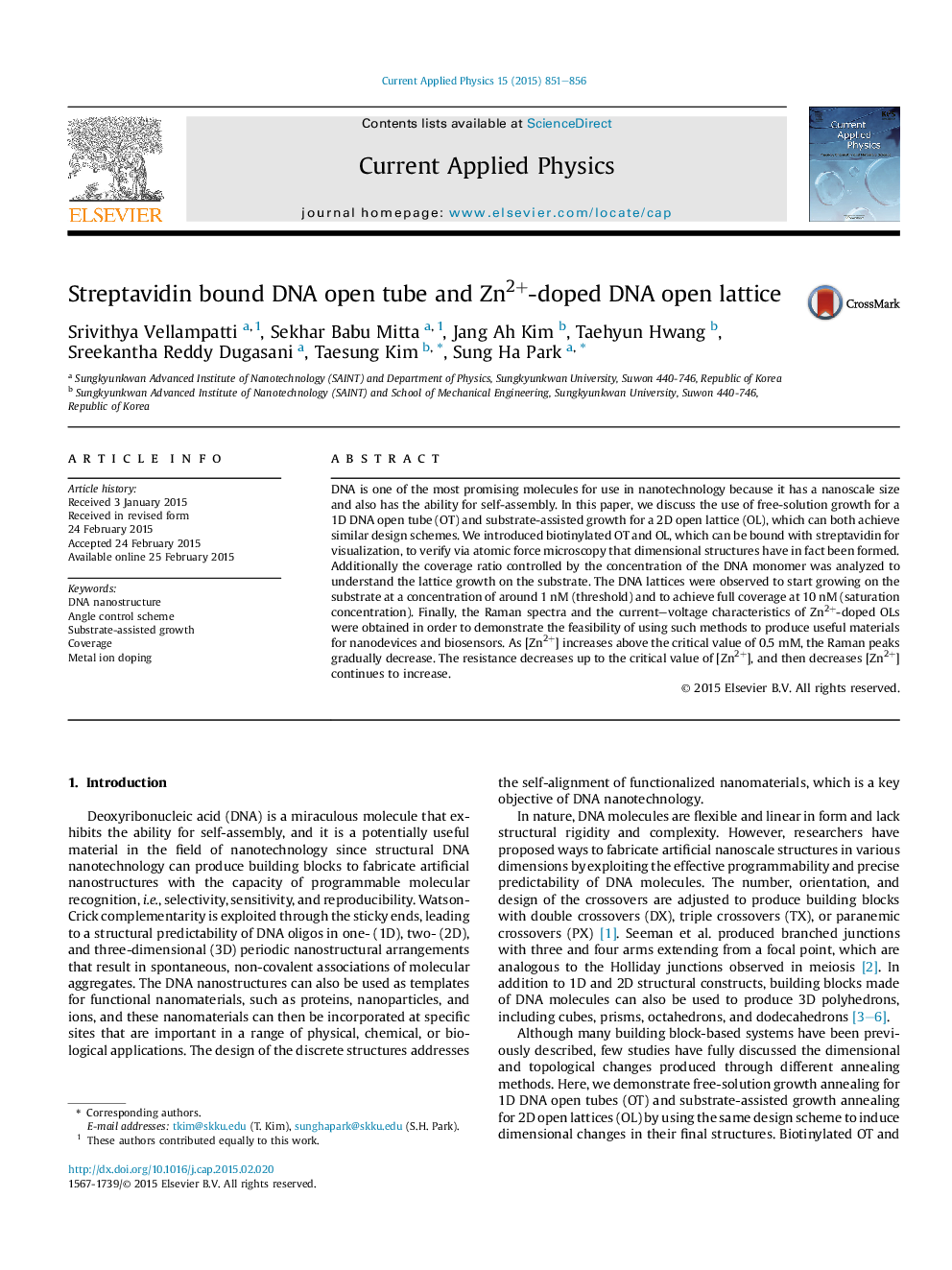| Article ID | Journal | Published Year | Pages | File Type |
|---|---|---|---|---|
| 1785596 | Current Applied Physics | 2015 | 6 Pages |
DNA is one of the most promising molecules for use in nanotechnology because it has a nanoscale size and also has the ability for self-assembly. In this paper, we discuss the use of free-solution growth for a 1D DNA open tube (OT) and substrate-assisted growth for a 2D open lattice (OL), which can both achieve similar design schemes. We introduced biotinylated OT and OL, which can be bound with streptavidin for visualization, to verify via atomic force microscopy that dimensional structures have in fact been formed. Additionally the coverage ratio controlled by the concentration of the DNA monomer was analyzed to understand the lattice growth on the substrate. The DNA lattices were observed to start growing on the substrate at a concentration of around 1 nM (threshold) and to achieve full coverage at 10 nM (saturation concentration). Finally, the Raman spectra and the current–voltage characteristics of Zn2+-doped OLs were obtained in order to demonstrate the feasibility of using such methods to produce useful materials for nanodevices and biosensors. As [Zn2+] increases above the critical value of 0.5 mM, the Raman peaks gradually decrease. The resistance decreases up to the critical value of [Zn2+], and then decreases [Zn2+] continues to increase.
